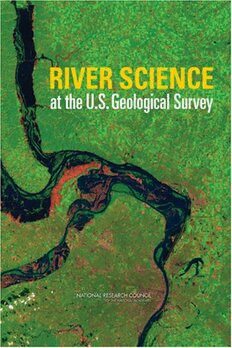
River Science at the U.S. Geological Survey PDF
207 Pages·2007·13.959 MB·English
Most books are stored in the elastic cloud where traffic is expensive. For this reason, we have a limit on daily download.
Preview River Science at the U.S. Geological Survey
Description:
Rivers provide about 60 percent of the nation’s drinking water and irrigation water and 10 percent of the nation’s electric power needs. The multiple and sometimes incompatible services demanded of rivers often lead to policy and management conflicts that require the integration of science-based information. This report advises the U.S. Geological Survey on how it can best address river science challenges by effectively using its resources and coordinating its activities with other agencies. The report identifies the highest priority river science issues for the USGS, including environmental flows and river restoration, sediment transport and geomorphology, and groundwater surface-water interactions. It also recommends two cross-cutting science activities including surveying and mapping the nation’s river systems according to key physical and landscape features, and expanding work on predictive models, especially those that simulate interactions between physical-biological processes. The report identifies key variables to be monitored and data-managed. It proposes enhancements in streamflow, biological, and sediment monitoring; these include establishing multidisciplinary, integrated reach-scale monitoring sites and developing a comprehensive national sediment monitoring program. Finally, it encourages the USGS to be at the forefront of new technology application, including airborne lidar and embedded, networked, wireless sensors.
See more
The list of books you might like
Most books are stored in the elastic cloud where traffic is expensive. For this reason, we have a limit on daily download.
